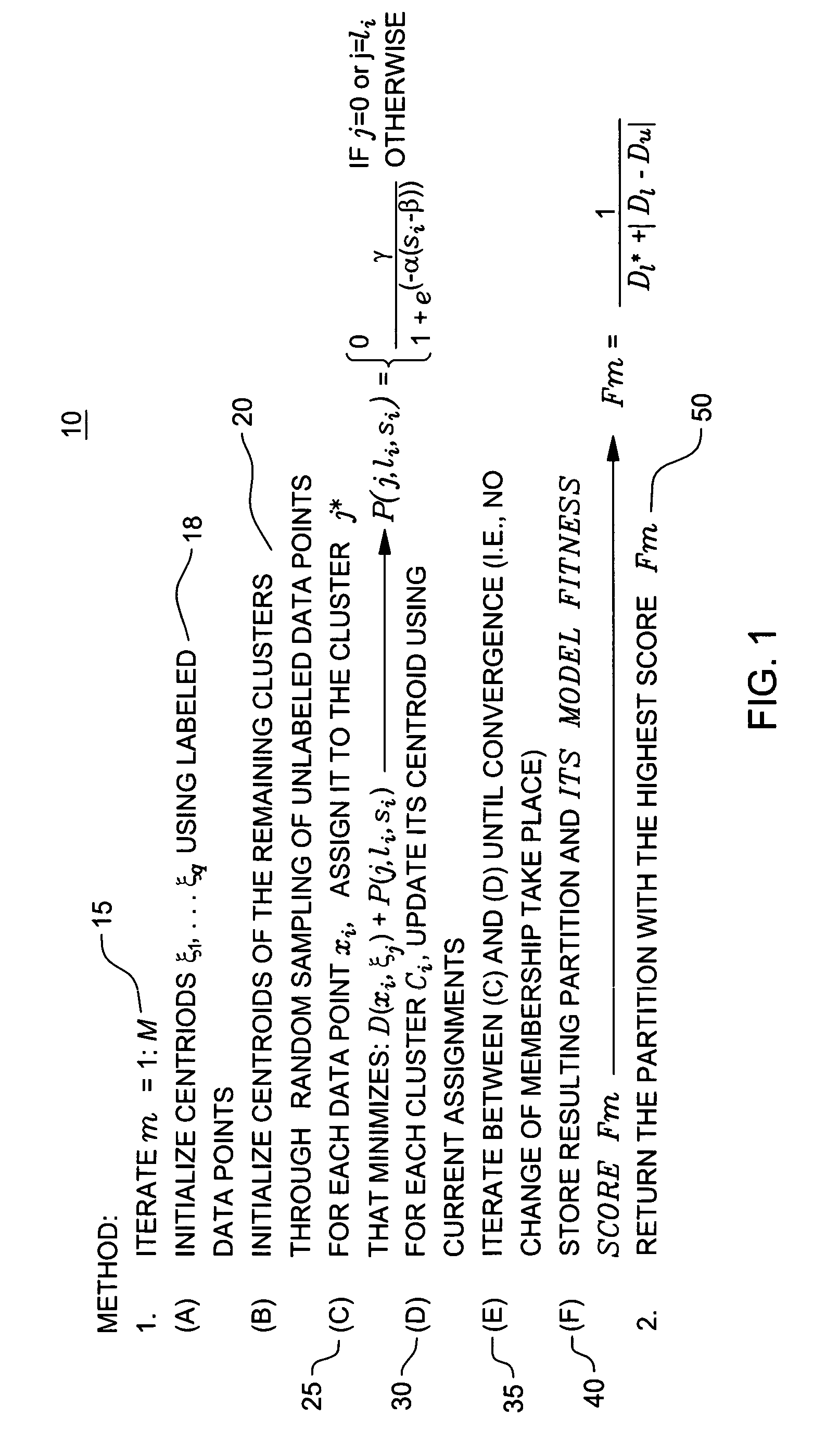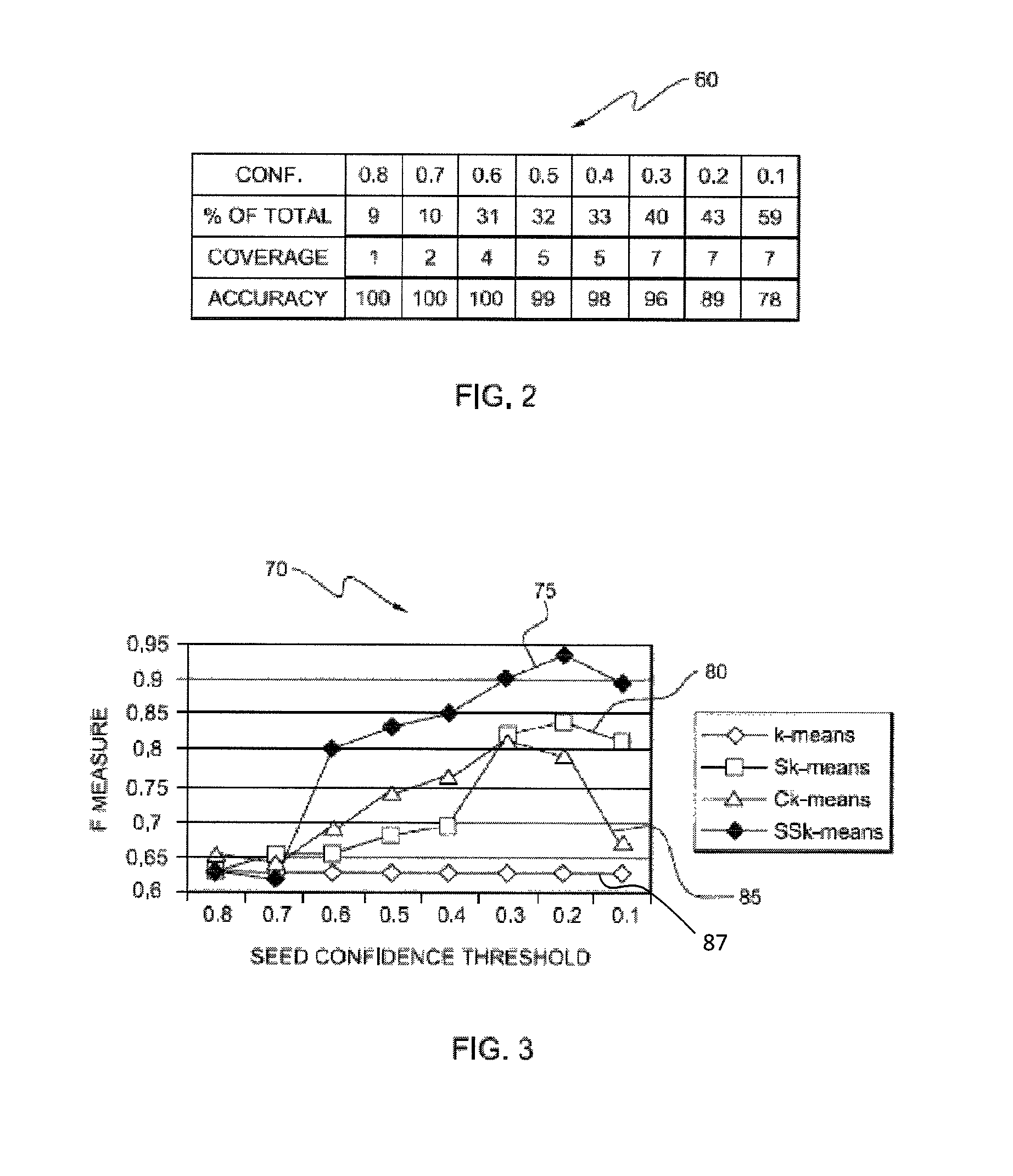System and method for adaptive categorization for use with dynamic taxonomies
a taxonomy and adaptive categorization technology, applied in the field of information systems, can solve the problems of limiting the ability of project managers to categorize projects accurately, difficult classification, and inability to rely on manual labeling or sample selection
- Summary
- Abstract
- Description
- Claims
- Application Information
AI Technical Summary
Benefits of technology
Problems solved by technology
Method used
Image
Examples
Embodiment Construction
[0051]According to the invention, the categorization problem is formulated as a semi-supervised clustering one. Text-based matching between category and data descriptions is used to generate “soft” seeds, and guide clustering in the basic feature space using a new variation of the k-means algorithm called Soft Seeded k-means. A new metric is introduced for model selection in situations where the seed coverage is incomplete (i.e., the seeds do not cover all categories), and a seed re-assignment penalty measure is implemented to effectively make use of the text matching results with varying degrees of confidence.
[0052]In an example project categorization problem, each category is defined by a category name, along with category descriptions specifying the scope of the category. For example, a category could be “Server Product Services for Microsoft”, and the description may include “MS Application Development and Integration Services”, “MS Evaluation and Planning for On Demand”, etc. I...
PUM
 Login to View More
Login to View More Abstract
Description
Claims
Application Information
 Login to View More
Login to View More - R&D
- Intellectual Property
- Life Sciences
- Materials
- Tech Scout
- Unparalleled Data Quality
- Higher Quality Content
- 60% Fewer Hallucinations
Browse by: Latest US Patents, China's latest patents, Technical Efficacy Thesaurus, Application Domain, Technology Topic, Popular Technical Reports.
© 2025 PatSnap. All rights reserved.Legal|Privacy policy|Modern Slavery Act Transparency Statement|Sitemap|About US| Contact US: help@patsnap.com



